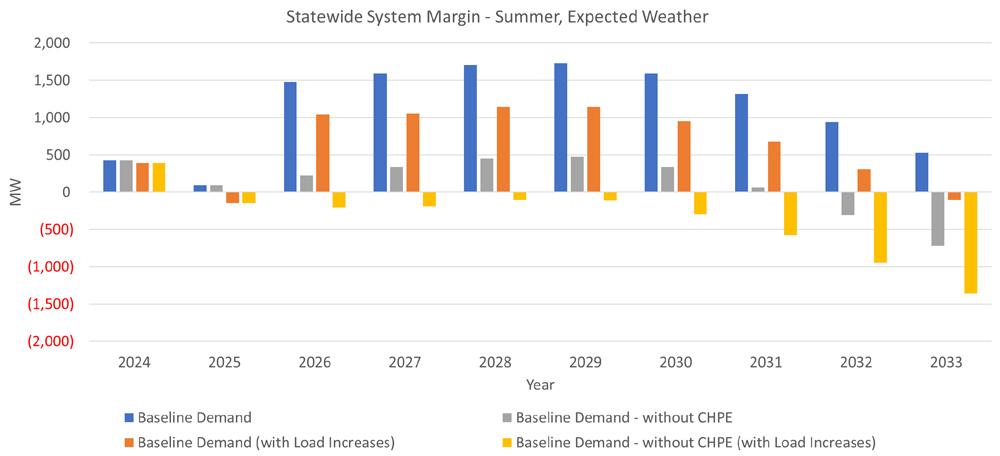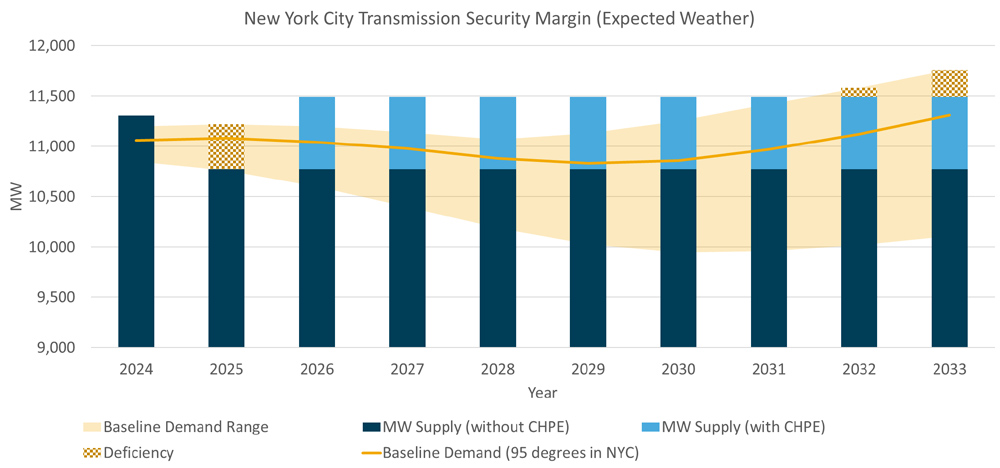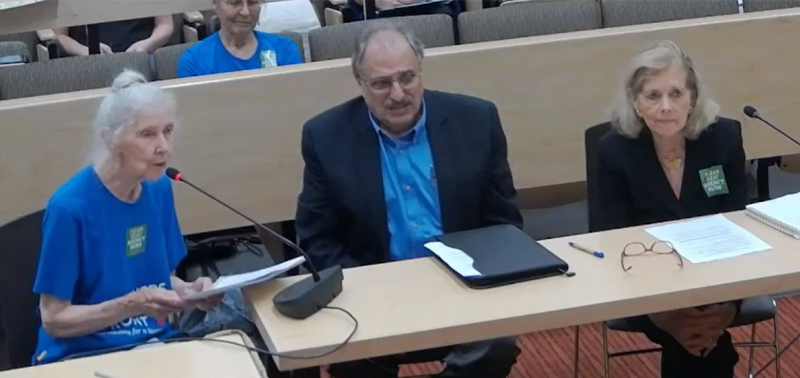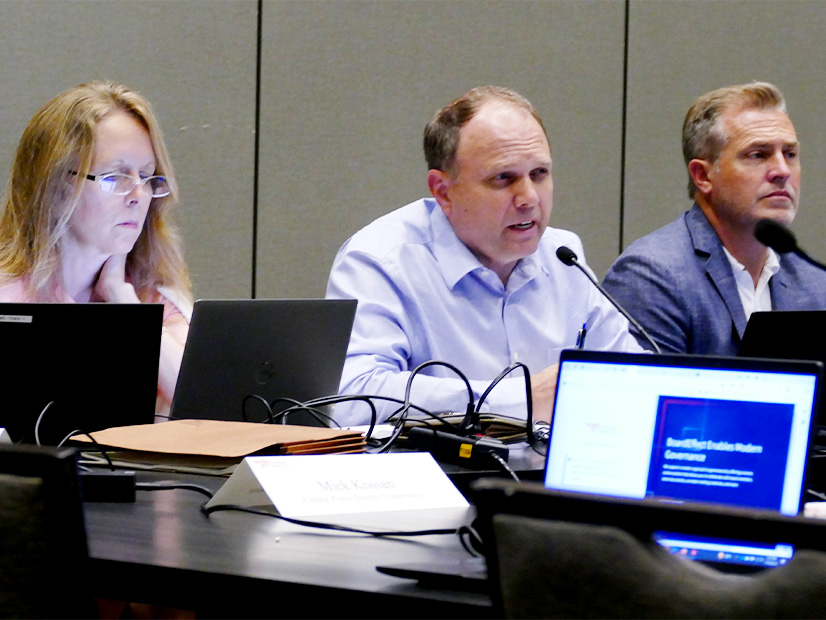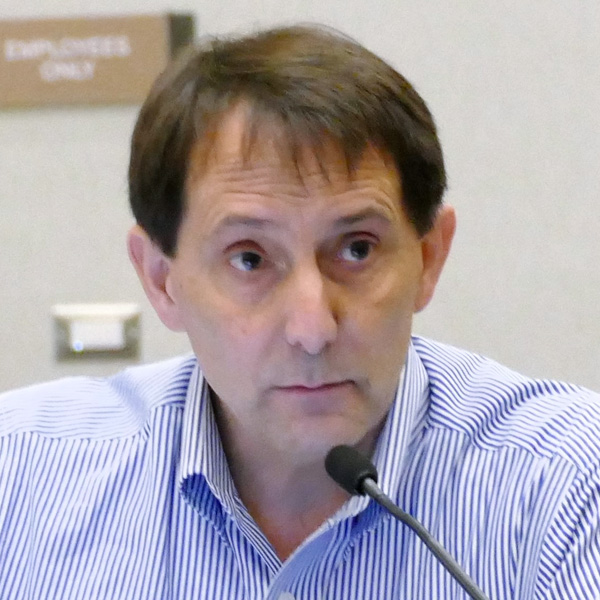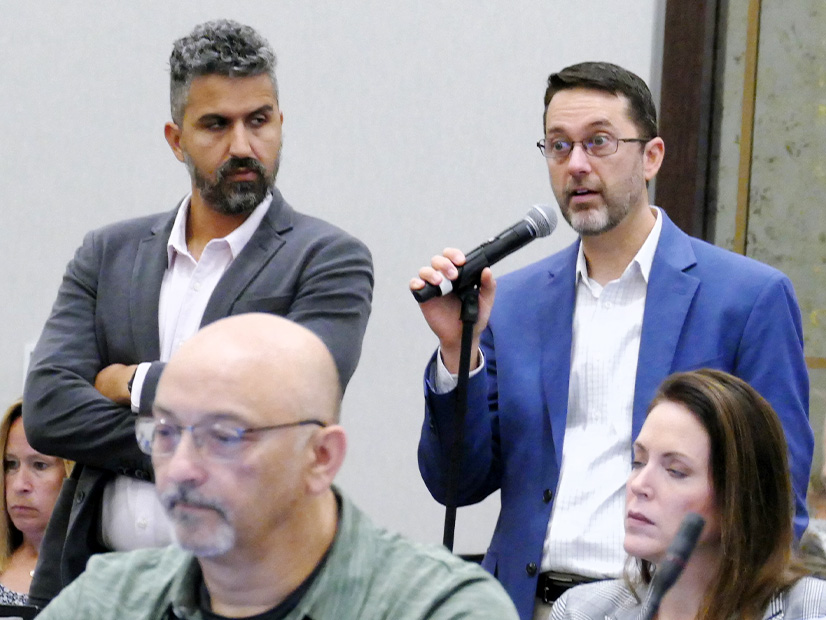Vote on Rules for Generation with Co-located Load Deferred
VALLEY FORGE, Pa. — The Market Implementation Committee delayed voting on five competing proposals to allow generators that provide a portion of their output to co-located load to retain their capacity interconnection rights (CIRs).
The discussion — brought by Brookfield Renewable and Exelon, later Constellation — explores the creation of rules allowing a generator to serve highly interruptible load not directly interconnected to the grid, while still being available to switch to serving PJM when called on to meet its capacity obligations. (See “Discussion Continues on Capacity Offers for Generators with Co-located Load,” PJM MIC Briefs: June 7, 2023.)
MIC Chair Foluso Afelumo made the determination to delay the vote based on stakeholder input and not hearing any objections during Wednesday’s meeting.
Constellation Vice President of Market Development Bill Berg said the company has been engaged in outreach with other package sponsors in the hopes that a compromise can be reached between the five options. The Advanced Energy Management Alliance (AEMA), PJM, the Independent Market Monitor and Exelon are the other four sponsors.
“I do think that it is in our stakeholders’ best interest to give it one more month to try to reach some compromise, because my fear is that this will end up at FERC,” Berg said. “…we are reaching out to anyone and everyone we can talk to, particularly some of the package sponsors to see if there’s a path forward on at least some of these issues.”
Exelon’s Sharon Midgley also supported delaying the vote for an additional month, saying she’s continuing to field questions from stakeholders about how the Exelon package would function.
PJM’s Tim Horger said he hadn’t heard of any specific changes being considered for any of the packages and would have been comfortable moving forward with a vote last week, but was supportive of any consensus building that could be done.
Four of the packages include two versions, addressing both co-located load without receiving direct service from the PJM grid and a second for interconnected loads, each of which would have required a second vote with the possibility of the end result being components from two different sponsors being selected. The AEMA proposal does not recognize a distinction between co-located load with or without grid service and would treat both the same.
First Read on Reactive Power Compensation Proposals
During the MIC’s first read last week, stakeholders discussed four packages that would revise the compensation structure for reactive power.
Danielle Croop, PJM’s facilitator for the Reactive Power Compensation Task Force, said the status quo system uses the “AEP methodology,” which identifies equipment at generators that support reactive capability, and each generator is required to make a cost-of-service filing at FERC, many of which result in “black box” settlements.
PJM Assistant General Counsel Thomas DeVita said FERC attorneys have said PJM reactive filings make up a significant portion of their caseload and the commission may seek a resolution of its own.
“If we don’t end this process with a solution there is a significant risk that FERC will act on its own and we will be here again in short order,” he said.
Croop said compensation also is not tied to generators’ performance in supplying reactive power and it sometimes has to provide make-whole and opportunity cost payments. The proposals aim to create uniform compensation — both for providing reactive service and associated opportunity cost payments, reduce administrative burden and draft new market rule changes to replace the existing procedures in Tariff Schedule 2.
A December 2022 poll at the task force found support among members was strongest for the Clean Energy Coalition proposal, at 63%, followed by the PJM package with 28% support. Two packages from the Monitor received 17% and 16% member support. The poll also found that 62% of responding members did not believe that change to the Schedule 2 compensation method is necessary. The poll received 280 member responses, 37 of which were unique.
The proposals are limited to new generators or facilities entering new compensation agreements, with the task force’s scope precluding changing existing reactive rates. The MIC voted down a proposal to expand the task forces’ scope to include existing service rates last month. (See “Stakeholders Reject Proposal to Expand Reactive Power Task Force Scope,” PJM MIC Briefs: June 7, 2023)
The CEC proposal is based on applying the AEP methodology to resources on a class-wide basis by forming a separate rate for each type of generator. The rates would be posted on PJM’s website, but only the underlying formula would be included in the tariff.
The CEC presentation states that applying the AEP process on a technology-wide basis avoids requiring unit-specific FERC filings and treats all generation comparably. Creating a cost-based compensation structure would incentivize investments in reactive capability that caps payments at the cost of the proxy unit. PJM’s proposal would limit compensation to generators that are capable of providing reactive service on the transmission grid, excluding those that can provide it at the distribution grid level. Payments would be based on demonstrated or tested capability and would seek to recognize that all reactive power (VARs) is the same.
Calpine’s David “Scarp” Scarpignato said existing testing for reactive capability often is difficult to complete given technical limitations on the grid, requiring some generators to schedule multiple tests before one can be successfully administered.
Wade Horigan, a principal of Tangibl, said he believes the PJM proposal would create an incentive for PJM and transmission owners to not change voltage during testing and that running only two tests would not reflect generators’ actual capability to respond to a voltage excursion.
PJM’s Glen Boyle said if generators exceed their capabilities, their parameters and compensation would be increased. If generators don’t perform, their revenues would be withheld for that month and future expected capability would be reduced. He estimated the proposal would require an 18- to 24-month implementation period.
Market Monitor Joe Bowring said the AEP method is archaic and illogical and was designed in 1997 to maximize the allocation of costs to reactive for a utility that was fully cost-of-service regulated. Bowring said a recent FERC order on the same issue in MISO required that all such payments for reactive power be terminated.
“There is no need for a cost-of-service approach in a system that relies on markets. This payment of more the $380 million per year in side payments is unnecessary and should be eliminated,” he said.
The first of the Monitor’s proposals — Package F under the matrix — would immediately eliminate separate cost-of-service payments to all resources and would also remove reactive revenues from the energy and ancillary services offset, resulting in an increase in capacity market revenues. All resources currently are required to provide reactive as a condition of their interconnection service agreements (ISA).
The second proposal — matrix Package H — would start with a flat-rate design, similar to PJM’s, but would fully phase out all cost-of-service payments over a short period and would use the same performance penalty as PJM.
Bowring said doing away with the current settlement process and using the AEP method for all resources, as recommended by the CEC, would result in an approximate doubling of the $380 million per year in reactive costs borne by load. He said the FERC order in the MISO reactive compensation case was clear and there also are additional cases in front of FERC that address the fundamental issues of cost-based rates in a market structure.
Stakeholders Question Scope of Distributed Resources Subcommittee
During an update on the work the Distributed Resources Subcommittee (DISRS) is engaged in, PJM’s Ilyana Dropkin noted that Voltus introduced a problem statement and issue charge in which the demand response provider said it could bring a stronger response to the market if offers could reflect operational parameters such as limits in curtailment duration and a need for downtime between curtailments.
Several stakeholders questioned if the DISRS is the best forum for such discussions and whether it’s appropriate for non-voting committees to consider such topics. Scarpignato said subcommittees have the potential to take up subjects that can result in PJM staff being devoted to topics that may not have support at the standing committee level. He predicted the matter brought by Voltus ultimately will result in an issue charge being approved for discussion at either the DISRS or cost development subcommittee (CDS), but it presents procedural questions.
